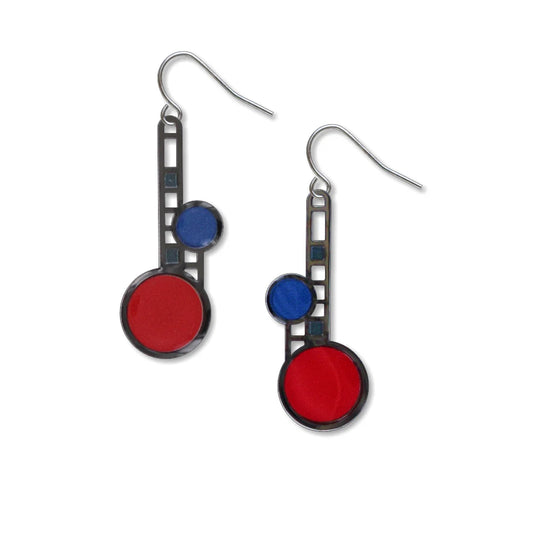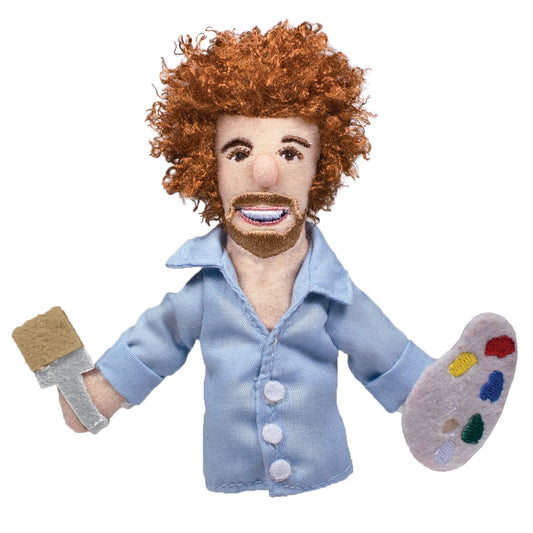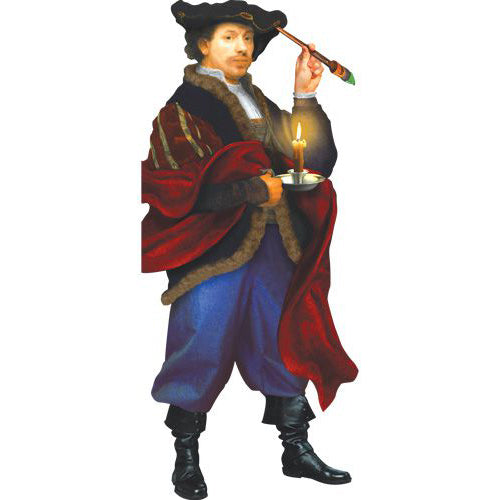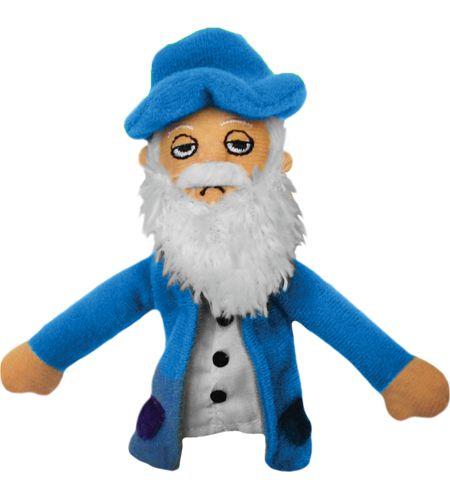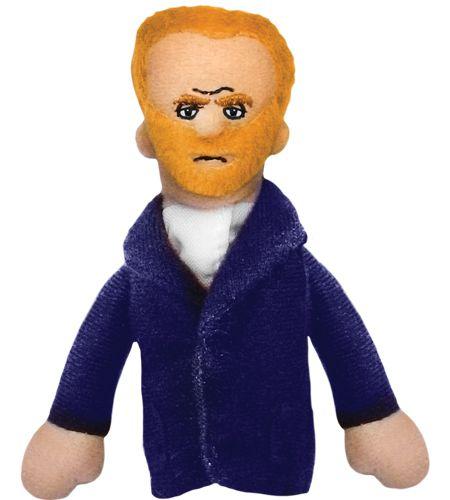Magnetische Fingerpuppe von Frank Lloyd Wright
Magnetische Fingerpuppe von Frank Lloyd Wright
The Unemployed Philosopher's Guild
Auf Lager
Verfügbarkeit für Abholungen konnte nicht geladen werden
Setzen Sie mit dieser magnetischen Fingerpuppe von Frank Lloyd Wright ein architektonisches Statement an Ihrem Küchenkühlschrank! Diese skurrile Fingerpuppe hat eine magnetische Rückseite und verwandelt jede lästige Pflicht in eine Mini-Aufführung. Machen Sie Furore mit einem Klassiker! Wird mit einem angebrachten Informationsetikett und einem Mini-Bioetikett mit wichtigen Daten, wichtigen Fakten und einem zitierfähigen Zitat geliefert.
- Aufgrund von Kleinteilen ab 5 Jahren empfohlen.
- Informationsschild enthalten
Product Details
Product Details
- Product type: Fingerpuppe
- Shipping Dimensions: 4.0 (10.2 cm)
- Shipping Weight: 0.19 lb (3.0 oz; 85 g)
- SKU: SKU: SKU010010987
- UPC: 814229001478
In these collections: Alle Produkte, Die Gilde der arbeitslosen Philosophen, Finger Puppets, Frank Lloyd Wright, Geschenke unter 10 $, Spaß & Kreativ, and Spielzeuge.
Share
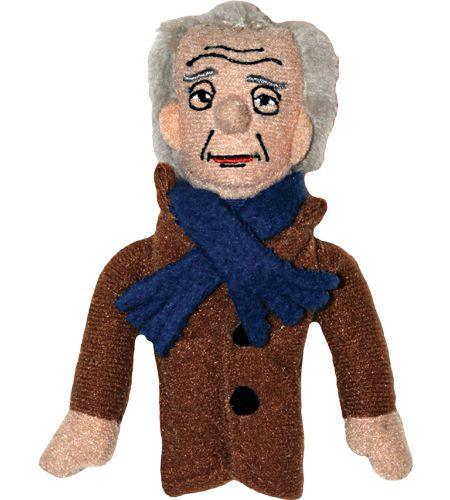

Über den Künstler
Frank Lloyd Wright
Frank Lloyd Wright (1867-1959) remains an iconic figure in American architecture and design. Born in Richland Center, Wisconsin, Wright's career spanned over seven decades and left an indelible mark on the world of architecture. He was known for his visionary approach, pioneering organic architecture that seamlessly integrated buildings with their natural surroundings. Wright's most famous works include Fallingwater, a masterpiece of modern architecture built over a waterfall in Pennsylvania, and the Guggenheim Museum in New York City, which features a distinctive spiral design. His unique style, characterized by clean lines, open spaces, and innovative use of materials, has influenced countless architects and continues to inspire generations of designers worldwide. Wright's legacy as an architectural genius and his commitment to a harmonious relationship between nature and structures have solidified his place as one of America's most revered architects.
Mehr Frank Lloyd Wright
-
Frank Lloyd Wright – Coonley Playhouse-Ohrringe
Normaler Preis $56.02 CADNormaler PreisStückpreis / pro -
Frank Lloyd Wright Wood Domino Set
Normaler Preis $56.01 CADNormaler PreisStückpreis / pro -
Opposites with Frank Lloyd Wright
Normaler Preis $18.19 CADNormaler PreisStückpreis / pro -
Meine ersten Formen mit Frank Lloyd Wright – Pappbilderbuch
Normaler Preis $18.19 CADNormaler PreisStückpreis / pro -
Frank Lloyd Wright Painting Kit
Normaler Preis $20.99 CADNormaler PreisStückpreis / pro -
Frank Lloyd Wright My First Shapes Crinkle Fabric Stroller Book
Normaler Preis $18.19 CADNormaler PreisStückpreis / pro -
Frank Lloyd Wright Frozen Spheres 500 Piece Foil Puzzle
Normaler Preis $23.79 CADNormaler PreisStückpreis / pro -
Frank Lloyd Wright Hillside Curtain 1500 Piece Foil Puzzle
Normaler Preis $35.00 CADNormaler PreisStückpreis / pro -
Ausziehbare Vase „Hoffman Rug“ von Frank Lloyd Wright
Normaler Preis $16.81 CADNormaler PreisStückpreis / pro -
Erweiterbare Vase „March Balloons“ von Frank Lloyd Wright
Normaler Preis $16.81 CADNormaler PreisStückpreis / pro

Über das Brand
The Unemployed Philosopher's Guild
The origins of the Unemployed Philosophers Guild are shrouded in mystery. Some accounts trace the Guild's birth to Athens in the latter half of the 4th century BCE. Allegedly, several lesser philosophers grew weary of the endless Socratic dialogue endemic in their trade and turned to crafting household implements and playthings. (Hence the assertions that Socrates quaffed his hemlock poison from a Guild-designed chalice, though vigorous debate surrounds the question of whether it was a "disappearing" chalice.)
Others argue that the UPG dates from the High Middle Ages, when the Philosophers Guild entered the world of commerce by selling bawdy pamphlets to pilgrims facing long lines for the restroom. Business boomed until 1211 when Pope Innocent III condemned the publications. Not surprisingly, this led to increased sales, even as half our membership was burned at the stake.
More recently, revisionist historians have pinpointed the birth of the Guild to the time it was still cool to live in New York City's Lower East Side. Two brothers turned their inner creativity and love of paying rent towards fulfilling the people's needs for finger puppets, warm slippers, coffee cups, and cracking up at stuff.
Most of the proceeds go to unemployed philosophers (and their associates). A portion also goes to some groups working on profound causes.
-
Museum Store Association Member
The Museum Store Association supports the cultural non-profit retail industry and the people who work in it.
-
Supports Non-profit Organizations
A portion of proceeds is donated to non-profit organizations. See description for details.
-
Designed in USA
Designed in the USA, with global manufacturing or assembly.
Mehr von The Unemployed Philosopher's Guild
-
Bob Ross magnetische Fingerpuppe
Normaler Preis $12.53 CADNormaler PreisStückpreis / pro -
Frida Kahlo Magnetische Fingerpuppe
Normaler Preis $12.53 CADNormaler PreisStückpreis / pro -
Pokal für moderne Kunst
Normaler Preis $27.94 CADNormaler PreisStückpreis / pro -
Frida Dreams Tasse
Normaler Preis $27.94 CADNormaler PreisStückpreis / pro -
Magnetische Fingerpuppe Diego Rivera
Normaler Preis $12.53 CADNormaler PreisStückpreis / pro -
James Baldwin „Kleiner Denker“ Plüschpuppe
Normaler Preis $33.61 CADNormaler PreisStückpreis / pro -
Rembrandt - Gestanzte Notizkarte mit Aufklebern
Normaler Preis $5.53 CADNormaler PreisStückpreis / pro -
Claude Monet Magnetische Fingerpuppe
Normaler Preis $12.53 CADNormaler PreisStückpreis / pro -
James Baldwin Magnetische Fingerpuppe
Normaler Preis $12.53 CADNormaler PreisStückpreis / pro -
Vincent van Gogh magnetische Fingerpuppe
Normaler Preis $12.53 CADNormaler PreisStückpreis / pro


